The golden age of Islam The Abbasid caliphs established the city of Baghdad in 762 CE. It became a center of learning and the hub of w...
The golden age of Islam
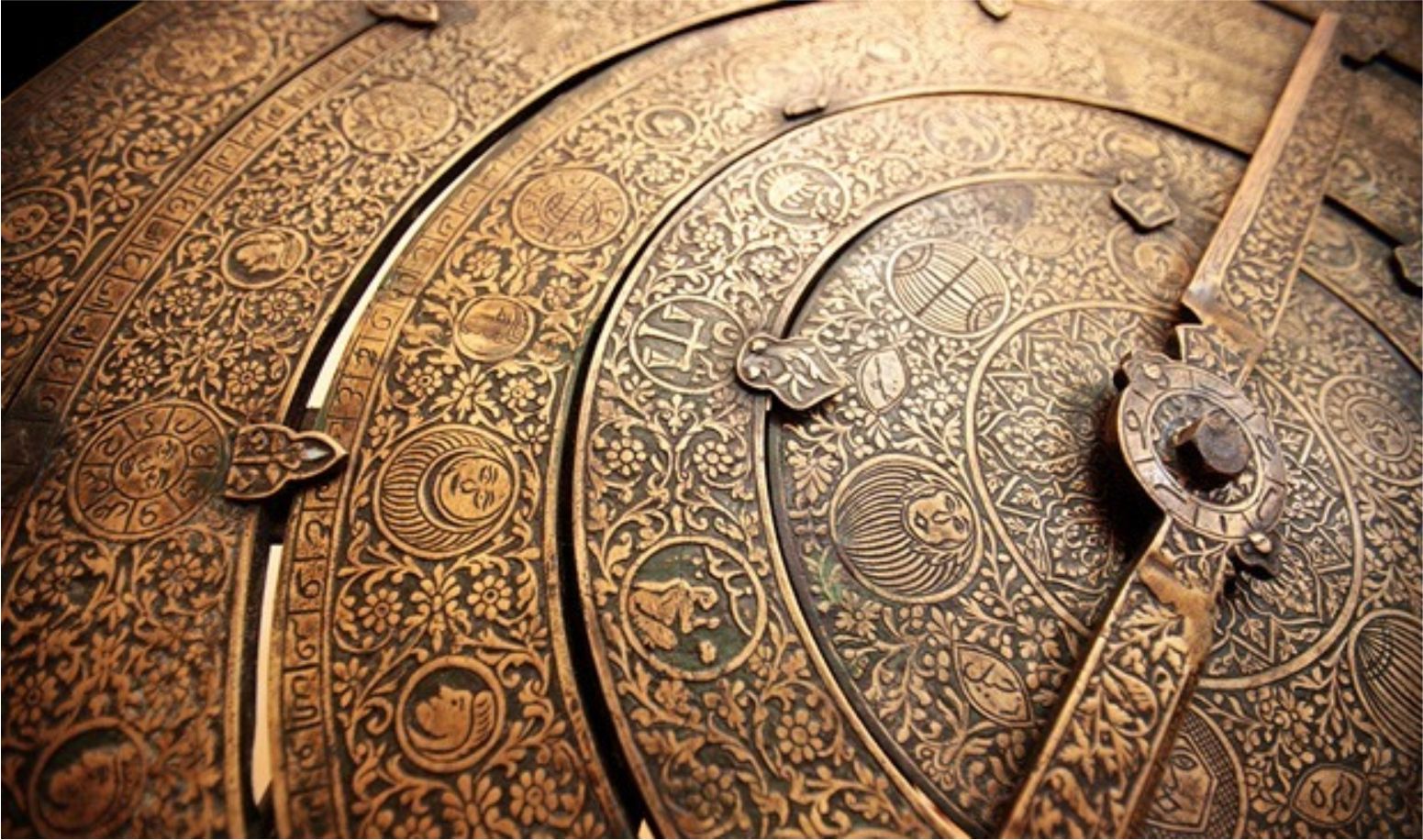
The
Abbasid caliphs established the city of Baghdad in 762 CE. It became a center
of learning and the hub of what is known as the Golden Age of Islam.
Overview
·
After the death of Muhammad,
Arab leaders were called caliphs.
·
Caliphs built and established
Baghdad as the hub of the Abbasid Caliphate.
·
Baghdad was centrally located
between Europe and Asia and was an important area for trade and exchanges of
ideas.
·
Scholars living in Baghdad
translated Greek texts and made scientific discoveries—which is why this era,
from the seventh to thirteenth centuries CE, is named the Golden Age of Islam.
A
love of knowledge was evident in Baghdad, established in 762 CE
as the capital city of the Abbasid Caliphate in modern-day Iraq. Scholars,
philosophers, doctors, and other thinkers all gathered in this center of trade
and cultural development.. Academics—many of them fluent in Greek and
Arabic—exchanged ideas and translated Greek texts into Arabic.
Chief
Muslim leaders after Muhammad’s death were referred to as Caliphs.The era of
the Abbasid Caliphs’ construction and rule of Baghdad is known as the Golden Age of Islam. It was an era when
scholarship thrived.
Abbasid Caliphate
After the death of Muhammad
and a relatively brief period of rule by the Rashidun Caliphs, the Umayyad Dynasty gained the reins of power.
Based in Damascus, Syria, the Umayyad Caliphate faced internal pressures and
resistance, partly because they displayed an obvious preference for Arab
Muslims, excluding non-Arab Muslims like Persians. Taking advantage of
this
weakness, Sunni Arab Abu al-Abbas mounted a revolution in 750 CE. With support
from his followers, he destroyed the Umayyad troops in a massive battle and
formed the Abbasid Dynasty in its place.
Baghdad
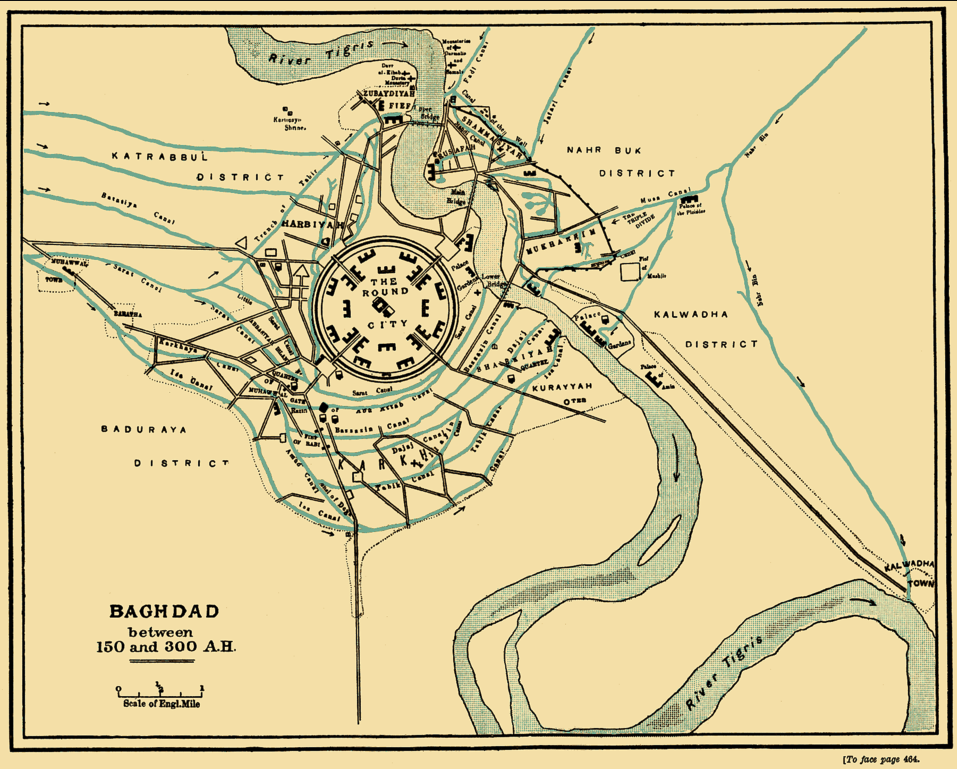 |
| A map of the city of Baghdad. Image credit: Wikimedia |
The
leaders of the Abbasid Dynasty built Baghdad, the capital of
modern-day Iraq. Baghdad would come to replace and overshadow Damascus as the
capital city of the empire. It was located near both the Tigris and Euphrates
rivers, making it an ideal spot for food production that could sustain a large
population.
The
Abbasids built Baghdad from scratch while maintaining the network of roads and
trade routes the Persians had established before the Umayyad Dynasty took over.
Baghdad was strategically located between Asia and Europe, which made it a
prime spot on overland trade routes between the two continents. Some of the
goods being traded through Baghdad were ivory, soap, honey, and diamonds.
People in Baghdad made and exported silk, glass, tiles, and paper. The central
location and lively trade culture of the city made a lively exchange of ideas
possible as well.
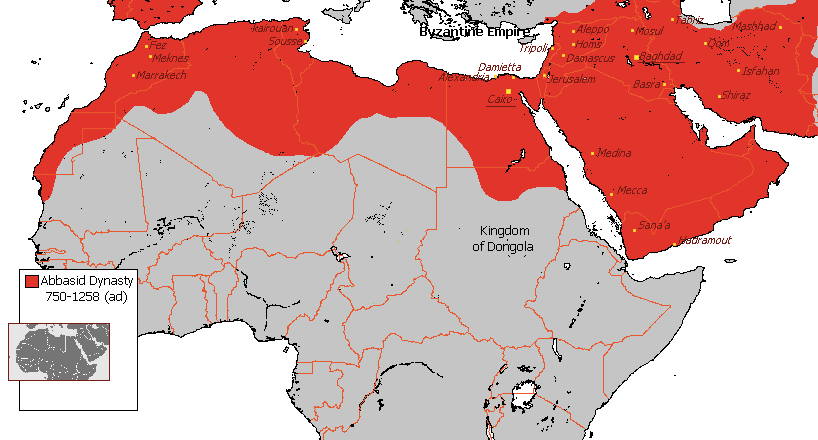 |
| A map of the extent of the Abbasid Dynasty from 750 to 1258. Image credit: Wikimedia |
Baghdad
attracted many people, including scholars, to live within its borders. To get a
sense of what living in the newly constructed city was like, here’s an excerpt
from the writings of Arab historian and biographer, Yakut al-Hamawi, describing
Baghdad in the tenth century:
The
city of Baghdad formed two vast semi-circles on the right and left banks of the
Tigris, twelve miles in diameter. The numerous suburbs, covered with parks,
gardens, villas, and beautiful promenades, and plentifully supplied with rich
bazaars, and finely built mosques and baths, stretched for a considerable
distance on both sides of the river. In the days of its prosperity the
population of Baghdad and its suburbs amounted to over two [million]! The
palace of the Caliph stood in the midst of a vast park several hours in
circumference, which beside a menagerie and aviary comprised an enclosure for
wild animals reserved for the chase. The palace grounds were laid out with
gardens and adorned with exquisite taste with plants, flowers, and trees,
reservoirs and fountains, surrounded by sculpted figures. On this side of the
river stood the palaces of the great nobles. Immense streets, none less than
forty cubits wide, traversed the city from one end to the other, dividing it
into blocks or quarters, each under the control of an overseer or supervisor,
who looked after the cleanliness, sanitation and the comfort of the
inhabitants.
Tenth-century
historian Yakut al-Hamawi, from Lost History 60-61
Pursuit of knowledge
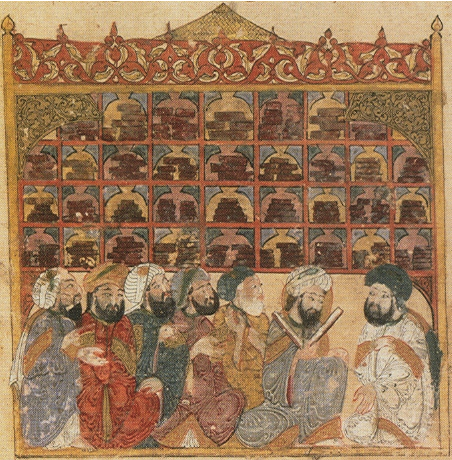 |
| Scholars at an Abbasid library. Image credit: Wikimedia |
Abbasid
Caliphs Harun al-Rashid and his son, al-Ma’mun, who followed him, established a House of Wisdom in Baghdad—a
dedicated space for scholarship. The House of Wisdom increased in use and
prestige under al-Ma’mun’s rule, from 813 to 833. He made a special effort to
recruit famous scholars to come to the House of Wisdom. Muslims, Christians,
and Jews all collaborated and worked peacefully there.
The Translation Movement
Caliphs
like al-Rashid and al-Ma’mun directly encouraged a translation movement, a formal translation of
scholarly works from Greek into Arabic. The Abbasid rulers wanted to make Greek
texts, such as Aristotle’s works, available to the Arab world. Their goal was
to translate as many of these famous works as possible in order to have a
comprehensive library of knowledge and to preserve the philosophies and
scholarship of Greece. The Abbasids aimed to have philosophy, science, and
medicine texts translated. In addition to Arab Muslim scholars, Syrian
Christians translated Syriac texts into Arabic as well.
Why
were the Abbasids so interested in a massive translation undertaking? In
addition to their desire to have a comprehensive library of knowledge and the Qur’an’s emphasis on learning as a holy activity, they
also had a practical thirst for medical knowledge. The dynasty was facing a
demand for skilled doctors—so having as much knowledge as possible for them to
access was a must.
One
way the Abbasid dynasty was able to spread written knowledge so quickly was
their improvements on printing technology they had obtained from the Chinese;
some historians believe this technology was taken after the Battle of Talas
between the Abbasid Caliphate and the Tang Dynasty in 751. The Chinese had
guarded paper making as a secret, but when the Tang lost the battle, the
Abbasids captured knowledgeable paper makers as prisoners of war, forcing them
to reproduce their craft.
In
China, papermaking was a practice reserved for elites, but the Arabs learned
how to produce texts on a larger scale, establishing paper mills which made
books more accessible. In turn, Europeans eventually learned these papermaking
and producing skills from Arabs.
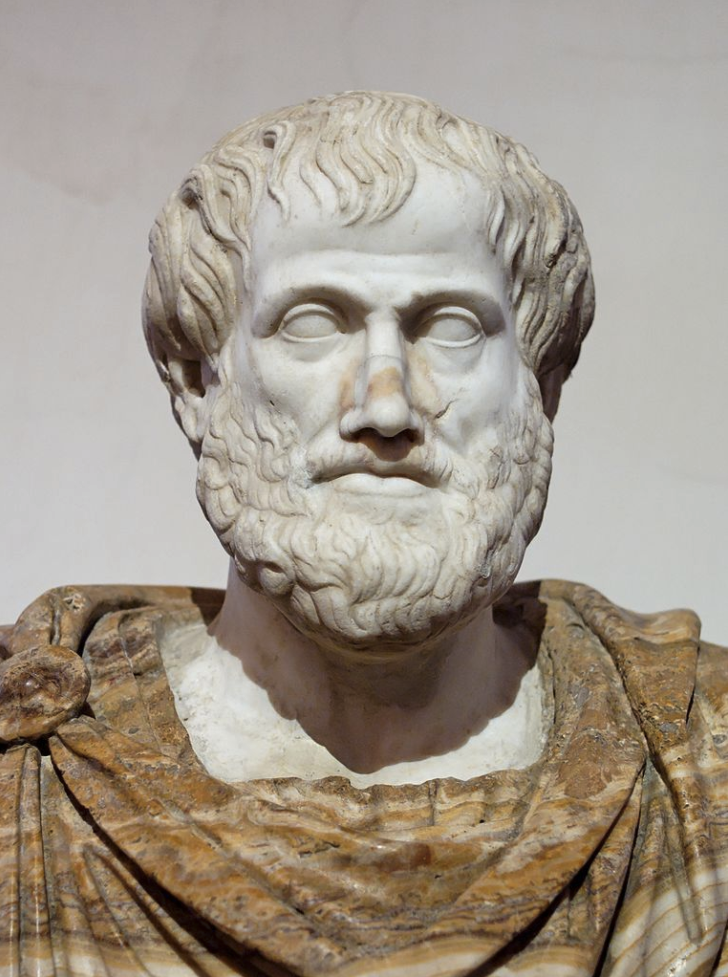 |
| Bust of Aristotle. Image credit: Wikimedia |
Abbasid advances
During
the Golden Age of Islam, Arab and Persian scholars—as well as scholars from
other countries—were able to build on the information they translated from the
Greeks and others during the Abbasid Dynasty and forge new advances in their
fields. Ibn al-Haythm invented the first camera and was able to form an
explanation of how the eye sees. Doctor and philosopher Avicenna wrote the Canon of Medicine, which helped physicians diagnose
dangerous diseases such as cancer. And Al-Khwarizmi, a Persian mathematician,
invented algebra, a word which itself has Arabic roots.
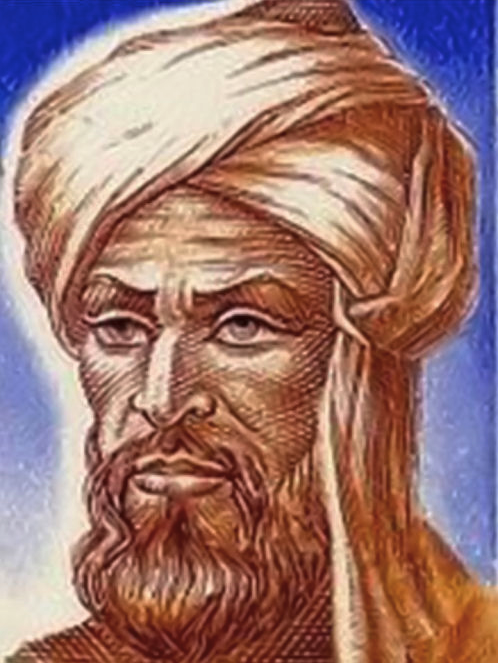 |
| Portrait of Al-Khwarizmi. Image credit: Wikimedia |
Summary
Scholars living in Baghdad during the Abbasid Caliphate contributed to the preservation of Greek and other existing knowledge about philosophy, astronomy, medicine, and many other disciplines. In addition to preserving information, these scholars contributed new insights in their fields and ultimately passed their discoveries along to Europe.
Bentley, Jerry. H. Traditions and Encounters: A Global Perspective on the Past. New York: McGraw Hill, 2006, 296-298.
“Battle of Talas,” Wikipedia.
Hamilton Morgan, Michael. Lost History: The Enduring Legacy of Muslim Scientists, Thinkers, and Artists. Washington, D.C.: National Geographic, 2007, 60-61
Hourani, Albert. A History of the Arab Peoples. Cambridge: Harvard University Press, 1991, 76.

No comments